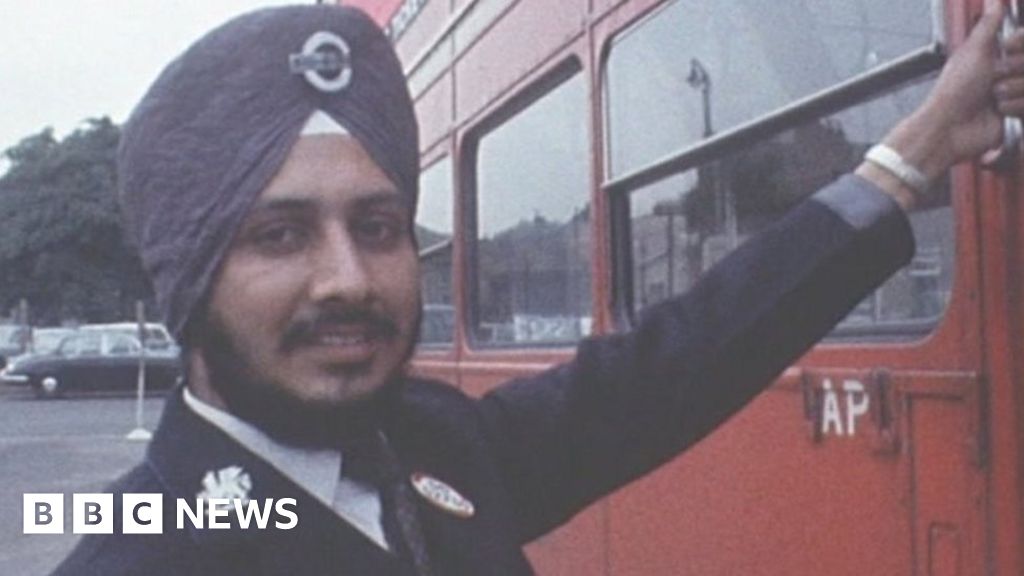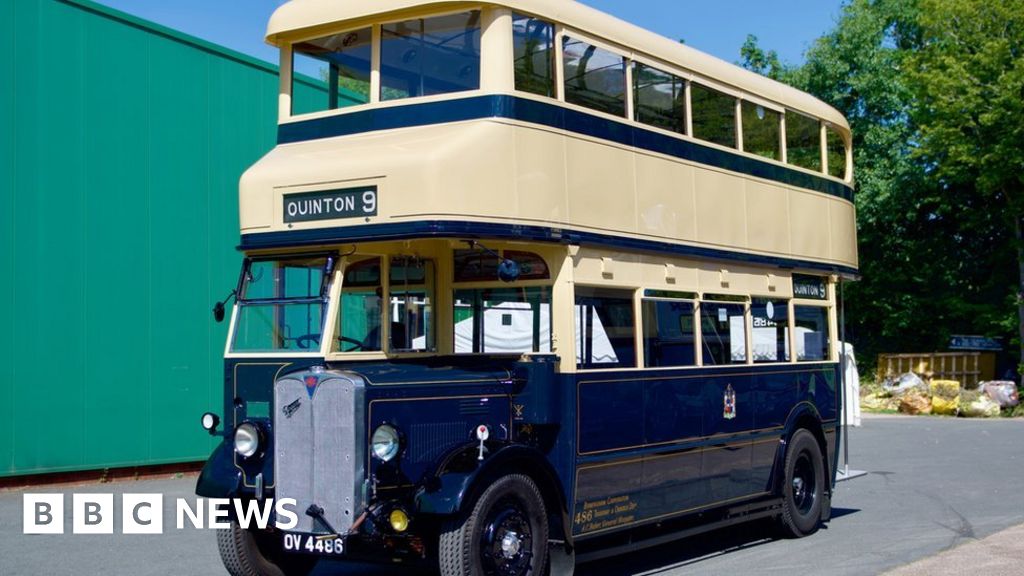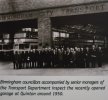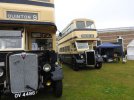-
Welcome to this forum . We are a worldwide group with a common interest in Birmingham and its history. While here, please follow a few simple rules. We ask that you respect other members, thank those who have helped you and please keep your contributions on-topic with the thread.
We do hope you enjoy your visit. BHF Admin Team -
HI folks the server that hosts the site completely died including the Hdd's and backups.
Luckily i create an offsite backup once a week! this has now been restored so we have lost a few days posts.
im still fixing things at the moment so bear with me and im still working on all images 90% are fine the others im working on now
we are now using a backup solution
You are using an out of date browser. It may not display this or other websites correctly.
You should upgrade or use an alternative browser.
You should upgrade or use an alternative browser.
Birmingham buses
- Thread starter ragga
- Start date
DavidGrain
master brummie
And I think the restriction on turbans lasted until much later.According to the latest article from the Birmingham Libraries Iron Room, Employment and Dyche the colour bar wasn’t lifted on bus drivers in Birmingham until 1954.
Lloyd
master brummie
Here is the story of the man who changed the rules about turbans on Wolverhampton's buses - uniform colour turban cloth is now given in place of a cap to those whose religion requires it.It looks like it was after March 1969 when Renee Short, MP for Wolverhampton NE, had her request rejected by the Minister of Transport for legislation to be introduced that would allow Sikhs to wear blue turbans with a badge instead of the traditional peaked cap.

The turban-wearing British bus driver who changed the law
It has been 50 years since Tarsem Singh Sandhu won the right to wear his turban to work.
www.bbc.co.uk
Rodney Allen
knowlegable brummie
Cheers Rod AllenMe too
Bob Davis
Bob Davis
I have just acqùired thè late David Harvey's last booķ?,Birmingham s Crossley Buses, although a lot of the photos are dark,a lot are of interest, because of the background behind the buses, of Birmingham in the fifties and sixties. I questioned whether it is his last book, because in mid 2021, Amazon were advertising this for March and a similar title for Daimler for April. If you liked the Crossley, we'll worth looking at.
Bob
Bob
Lloyd
master brummie
Mirroring the situation in other British cities, in post-war Birmingham black people were barred from employment as conductors or drivers on buses. Although they were employed in local authority garages and repair works as mechanics, they were excluded from roles which involved contact with passengers. Minutes of the Birmingham Transport Committee concerning the issue of 'coloured labour' provide an insight into the shifting attitude towards the employment of black people by the Birmingham Corporation until the matter was finally resolved in 1954.According to the latest article from the Birmingham Libraries Iron Room, Employment and Dyche the colour bar wasn’t lifted on bus drivers in Birmingham until 1954.
Strong opposition by the Committee against the introduction of 'Polish, foreign and coloured personnel' as platform staff in 1949 (BCC/1/BE/24: minute 3564) gave way to a more positive attitude in 1951 which was thwarted by the trade unions and its members. Objections raised by the unions included members' fear of a reduction in their earning capacity and the loss of large numbers of existing staff if black people were employed, as well as the belief that women preferred not to work with 'coloured men' BCC/1/BE/26: minute 4960; BCC/1/BE/28: minute 6132.) Despite 860 vacancies for conductors, applications by black men and women were rejected (The Times 9/2/1954) and the organisation sought workers from Belgium and Malta for vacancies that could have been filled by black workers already in Britain (BCC/1/BE/26: minute 4880.)
By 1954 the Transport Committee was growing impatient at the lack of progress made on the issue. The Committee was facing mounting pressure as a result of not only the acuteness of the continuing labour crisis but also increasing public attention and negative publicity in the press. As a result of this it finally resolved that the General Manager "be authorised to engage any suitable personnel for service in the Department" (BCC/1/BE/28: minute 6283.)
In March 1954 Raja Mohammed Shafi became Birmingham City Transport's first black conductor (Birmingham Gazette 24/3/1954.)
Who sat on the Birmingham Transport Committee?Mirroring the situation in other British cities, in post-war Birmingham black people were barred from employment as conductors or drivers on buses. Although they were employed in local authority garages and repair works as mechanics, they were excluded from roles which involved contact with passengers. Minutes of the Birmingham Transport Committee concerning the issue of 'coloured labour' provide an insight into the shifting attitude towards the employment of black people by the Birmingham Corporation until the matter was finally resolved in 1954.
Strong opposition by the Committee against the introduction of 'Polish, foreign and coloured personnel' as platform staff in 1949 (BCC/1/BE/24: minute 3564) gave way to a more positive attitude in 1951 which was thwarted by the trade unions and its members. Objections raised by the unions included members' fear of a reduction in their earning capacity and the loss of large numbers of existing staff if black people were employed, as well as the belief that women preferred not to work with 'coloured men' BCC/1/BE/26: minute 4960; BCC/1/BE/28: minute 6132.) Despite 860 vacancies for conductors, applications by black men and women were rejected (The Times 9/2/1954) and the organisation sought workers from Belgium and Malta for vacancies that could have been filled by black workers already in Britain (BCC/1/BE/26: minute 4880.)
By 1954 the Transport Committee was growing impatient at the lack of progress made on the issue. The Committee was facing mounting pressure as a result of not only the acuteness of the continuing labour crisis but also increasing public attention and negative publicity in the press. As a result of this it finally resolved that the General Manager "be authorised to engage any suitable personnel for service in the Department" (BCC/1/BE/28: minute 6283.)
In March 1954 Raja Mohammed Shafi became Birmingham City Transport's first black conductor (Birmingham Gazette 24/3/1954.)
A Sparks
master brummie
I was just looking to see if there was a similar situation on London Transport (coincidentally there is currently an exhibition on workers from the Caribbean at the Transport Museum) but I can't see there were any problems with the Unions.
The first black bus driver in London was in 1910 and presumably some of the men who came over on the Windrush in 1948 were employed?
In 1956 London Transport were operating a scheme to recruit staff directly from the Caribbean, Barbados in particular.
The first black bus driver in London was in 1910 and presumably some of the men who came over on the Windrush in 1948 were employed?
In 1956 London Transport were operating a scheme to recruit staff directly from the Caribbean, Barbados in particular.
Lloyd
master brummie
Thanks, I thought it maybeCouncillors?
Birmingham Corporation's Transport Committee on a visit to Quinton Garage in about 1951:
View attachment 168885
Trevor Rainsford
Guest
My brother and myself used to love the Birmingham buses from Crossleys, noisy old things, and narrow radiator grill to Guys ...when the first bus with the doors on the front came about he made me stand for nearly 2 hours one Sunday just so he was one of the 1st to ride on it on the Outer Circle no.11 route via Ward End..anyone on here can tell me how you post an article and what you put in for receiptants as,I don't have any specific persons name ...thanks TrevRe Old Buses
Hello alf,yer the crosslies guys was very stiff sticks i was only 14. there was one bus a training bus with 2 steering weels did you ever see it?
DavidGrain
master brummie
If 1951 is not a confirmed date, It could be an official opening ceremony as Quinton Garage was opened in 1949. I would have thought that the Transport Committee in those days would have had about 16 members as a guess.Councillors?
Birmingham Corporation's Transport Committee on a visit to Quinton Garage in about 1951:
View attachment 168885
Lloyd
master brummie
I don't know how accurate the date is, so its possible. The Transport Committee did visit a few properties every year though, usually if they were new(ish) or had been modified in some way (i.e. Tram depots to Bus garages).If 1951 is not a confirmed date, It could be an official opening ceremony as Quinton Garage was opened in 1949. I would have thought that the Transport Committee in those days would have had about 16 members as a guess.
Radiorails
master brummie
Notice how they have placed newer buses at the front. 
Pedrocut
Master Barmmie

Birmingham bus that survived the Blitz restored for £500,000
Vehicle 486 was once a home for a retired miner in a Herefordshire field.
www.bbc.co.uk
mikeflan
master brummie
Once upon a time many years back they would drive these old piano front buses into a field in Arley and use them as caravan holiday lets....as I know from a family holiday way back in 1946...somewhere in my archives I still have a photo of the event.......with the bus wheels removed and on bricks....that was caravanning in those far back years2nd July Gaydon
View attachment 171523View attachment 171524
Gerry Cannell
master brummie
Thanks. Just what Showmen did with the old buses, bought them cheap, and used them for sleeping in AND as power for lights and rides. If only they had been kept.....progress eh!
Richard Dye
master brummie
Great article Pedro!
Birmingham bus that survived the Blitz restored for £500,000
Vehicle 486 was once a home for a retired miner in a Herefordshire field.www.bbc.co.uk
Eric Gibson
master brummie
I know it's a treasure but how on earth can you spend half a million pounds on a vehicle restoration?
Richard Dye
master brummie
Absolutely! Especially when the original estimate was 300K. I understand over time things increase but!I know it's a treasure but how on earth can you spend half a million pounds on a vehicle restoration?
Eric Gibson
master brummie
My car painter restores classic car to an extraordinarily high standard and some of his customers whinge about the price when it gets up around six grand. 
Bob Davis
Bob Davis
When you consider a basic almost obsolete new diesel bus can cost £250k, and the hyybrid/battery/hydrogen busès£350k to £500k and above for luxury and specialist buses, £500k is while not cheap, but reasonable, remember there was probably no parts, panels, engine parts, tyres, wheels & etc available from stock anywhere. Everything would have to be made specially. The bus was almost 100 years old. And designs have changed.I know it's a treasure but how on earth can you spend half a million pounds on a vehicle restoration?
Bob
Lloyd
master brummie
It was an extra special job, and on dismantling it was found that the floor bearers (which the bodywork rests on the chassis with) were designed weak and had subsided over the years, and the chassis frame was bent as well, it had to be a complete strip down. Only the roof was untouched. The engine was built up from parts of five, the rear differential and hubs needed replacement, as did one of the front hubs. Parts from two other chassis had to be obtained from scrapyards and themselves rebuilt to original specification. Every roller and taper bearing needed replacement, the seats were new (to original drawings) as was the moquette and leather for their coverings, and the leathercloth for the interior panel cladding. It was completely rewired (and converted from a 12 to 24 volt system) and even the carburettor overhauled and jet sizes altered to deal with modern petrol which burns faster than the blends available in the 30s and 40s. A fair bit of the original survives, but mostly hidden away in framework and for instance, most of the upper deck floor but that is hidden beneath new floor lino - again to original spec. Yes it was expensive, but there again labour costs over a nine year period are bound to be high as against most of the museum's restorations that are done 'in house' with volunteer labour.I know it's a treasure but how on earth can you spend half a million pounds on a vehicle restoration?
Last edited:
paul stacey
master brummie
It was well done, and survives for future generations, costs today are extortionate, considering the costs from 60's and 70's, I still don'rt know how the cost per mile of a new motorway can be a million quid , still I'm old and don't understand a lot of today, most of the modern world is a complete mystery to me...
Richard Dye
master brummie
Unfortunately Paul, I think it’s a mystery to those trying to run it!It was well done, and survives for future generations, costs today are extortionate, considering the costs from 60's and 70's, I still don'rt know how the cost per mile of a new motorway can be a million quid , still I'm old and don't understand a lot of today, most of the modern world is a complete mystery to me...




